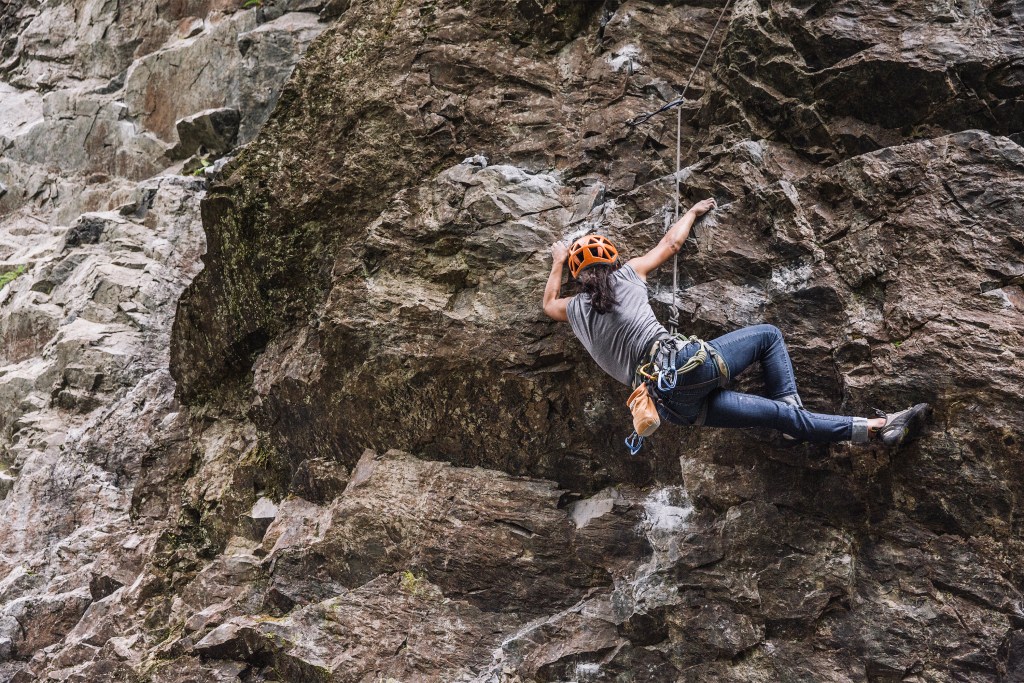Good skin—tough and durable yet resilient—is crucial to climbing success. It doesn’t matter if you have Sharma-strength or Margo-technique, you won’t get far if the skin on your hands and fingertips can’t hold up under the stress. Here, professional rock climbers Steph Davis and Brette Harrington share some of their skin care tips with us.
Find the Balance
Steph describes the ideal climbing skin as “leathery, tough skin resistant to cracks and splits.” Brette seconds the tough skin, and points out that developing calluses on your fingertips is particularly important for outdoor climbers. It should also heal quickly. This boils down to finding your ideal balance between tough and supple.
Building tough and supple skin takes time and care. Calluses, or areas of thickened, tough skin, build up due to repeated friction, pressure and irritation as you put in time at the gym and crag. As your skin naturally toughens up, it’s important to keep it from drying out which can lead to cracking or tears. Steph and Brette both use salve at night, after climbing to keep their skin ready for the tomorrow.
Care for Calluses (Yes, That’s a Thing)
The first trick to building good calluses is consistency. You have to put your hands under stress consistently to build those calluses up. How do you do that? “There’s only one way,” says Brette, “By climbing a lot.” As you start to develop decent calluses, scan for tiny flakes of skin and areas where the callus is starting to become thicker compared to the rest of the callus. File those areas down, gently, with a nail file or fine sandpaper and use a nail clipper to remove tiny flakes. The goal is to keep your fingertips smooth so that it’s less likely for a flake or edge to catch on rock and rip (ouch).

Add Climbing Balm or Salve to Your Kit
If you’re training or climbing regularly, apply a salve before bed. “I use a hand salve nearly every night after climbing. This keeps my skin moist and helps repair cuts,” says Brette. There are many climbing-salves and balms. Find one you like and consider it essential to your kit.
Drink and Eat Right
What you eat and drink affects your skin. Steph says she eats “a varied, whole food diet with very little sugar or processed foods, and I’m sure this helps. I’ve always had good skin.” Going vegan may be unrealistic or extreme for some, but consider focusing on whole foods and cutting out junk.
Hydration is also key to maintaining supple skin. It’s easy to get dehydrated on long climbs, and climbers are keenly aware that this affects everything from flexibility to mental sharpness. But dehydration also takes a toll on skin, both by drying the skin (increasing the likelihood of splits and tears) and by reducing the skin’s ability to heal.
Keep Your Digits Clean
After your session, whether at the gym or outside, wash your hands thoroughly and dry them. This is a solid move just for the sake of not spreading germs and bacteria, but it also removes chalk that will only continue to dry your skin throughout the day. While you’re at it, scan for micro tears and abrasions and take care of any wounds with antibacterial gel or ointment and bandages, then apply some salve to your hands.

Heal Your Injuries
Even when you’ve achieved the perfect balance of tough and supple (aka “good skin”), split tips and flappers happen. Steph uses what she has on hand when climbing: “If I start bleeding, I just pack a bunch of chalk into the cut and that usually stops it,” she says. Brette uses salve to cover the wound then bandages it with climbing tape. “I fold a small section over double so that the sticky side does not stick to the wound. I leave it covered and moist for a few hours, then open it to dry out for a few hours. Then again, moisten and cover. For me, this has helped hasten the recovery process.” Another trick: super glue. In case of ripping off a callus, close the wound, glue the edges down (avoid getting glue directly in the wound) then tape it up and keep climbing. Don’t forget to wash up and use an antibiotic ointment at the end of the day.
